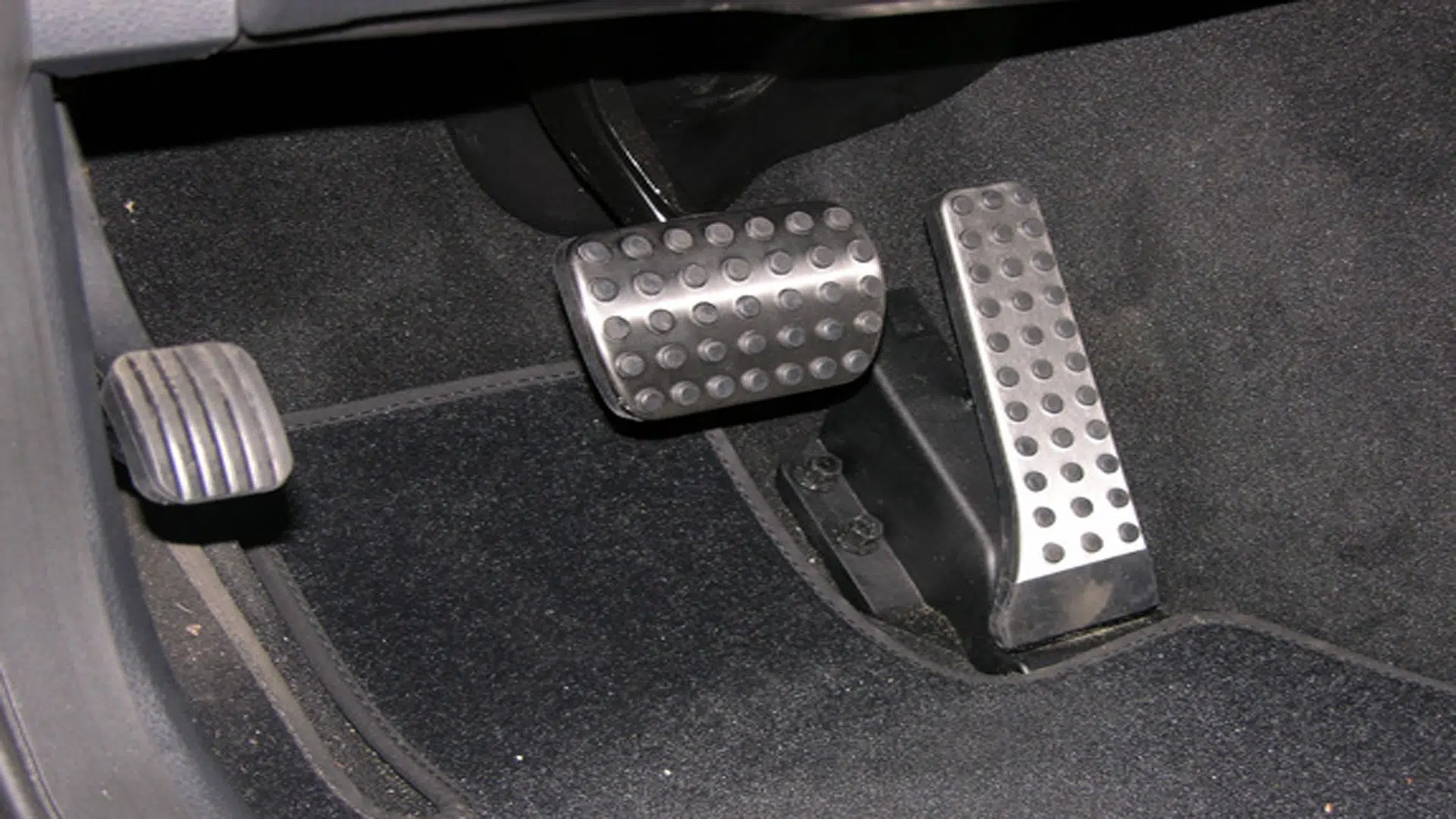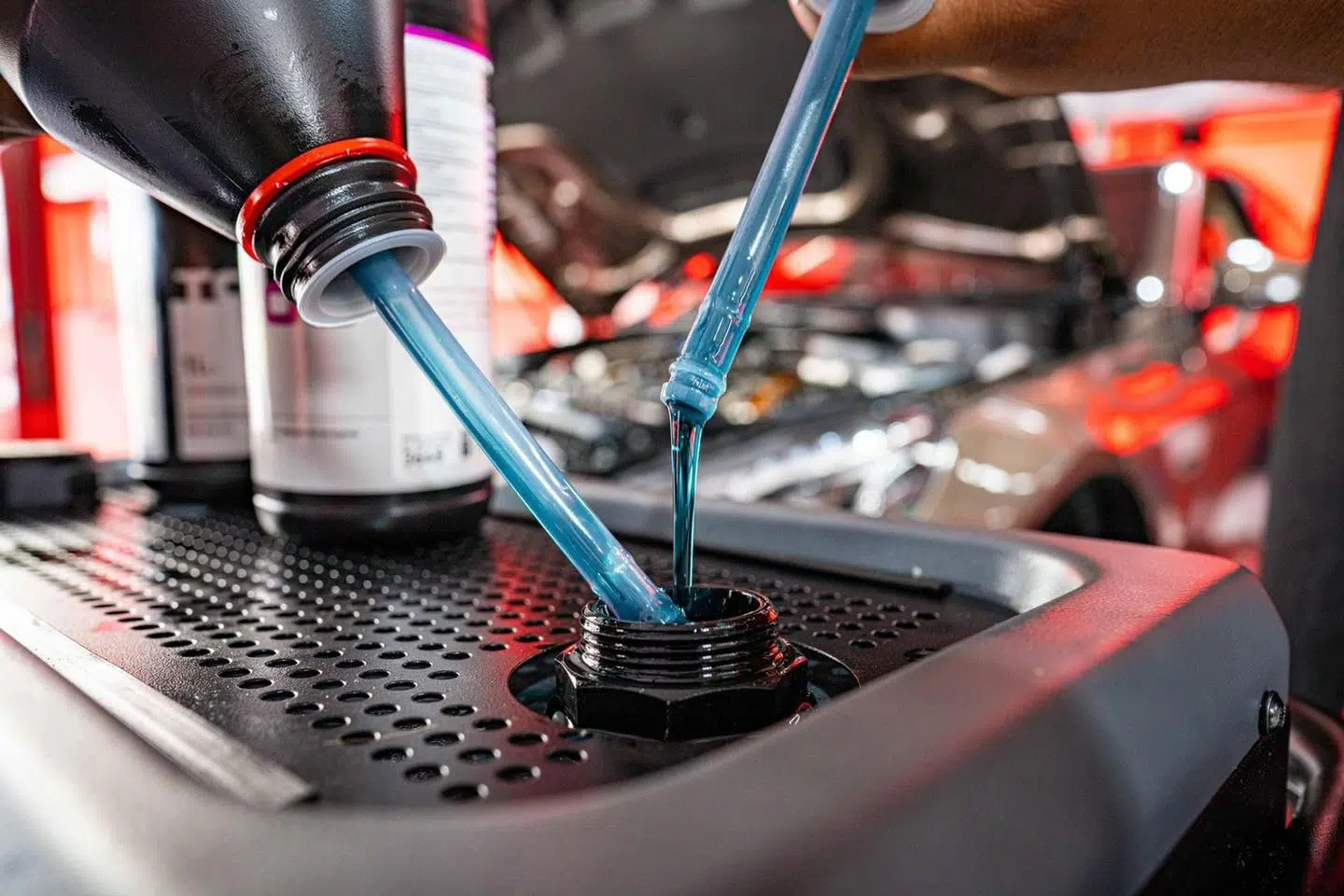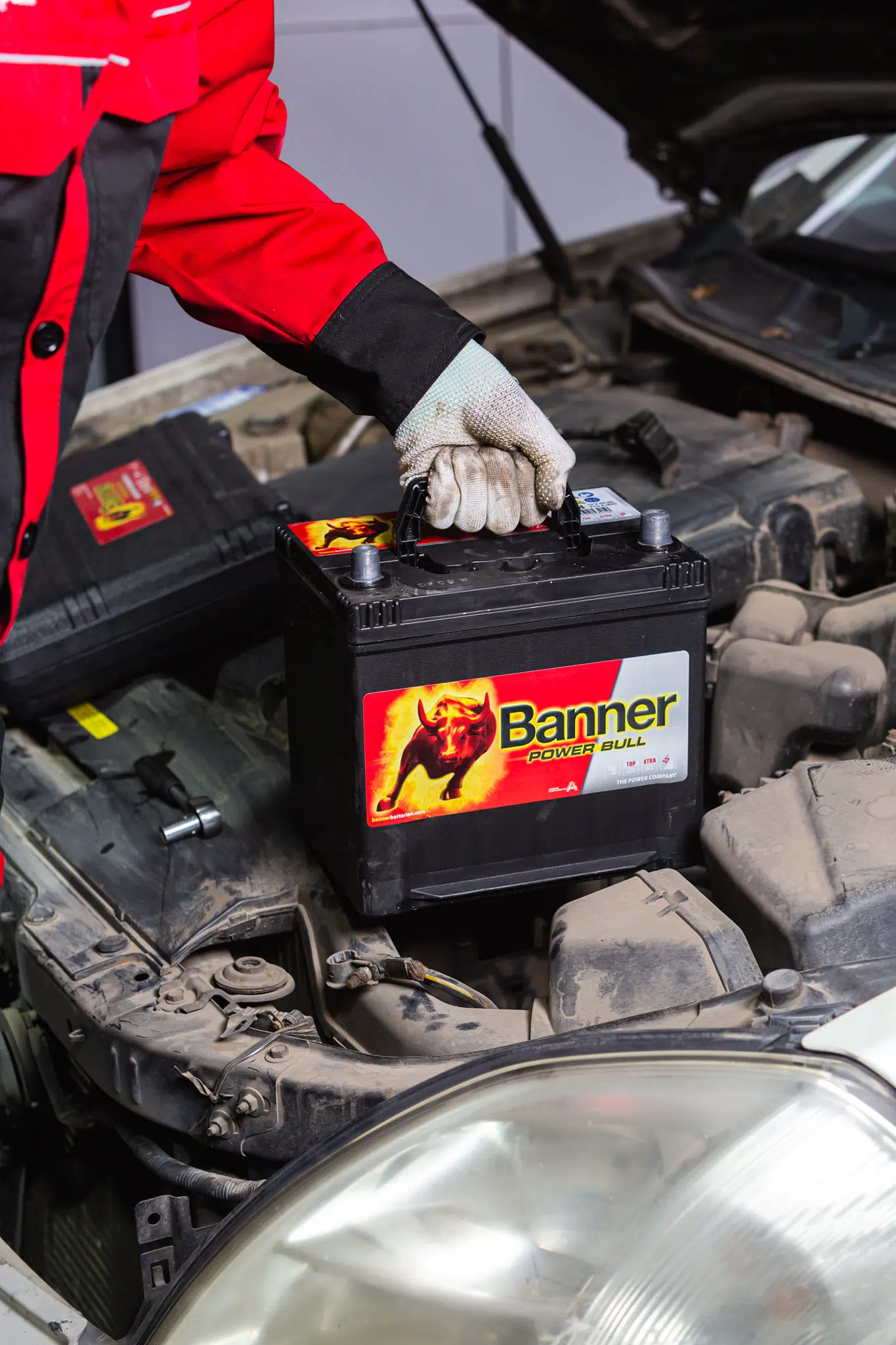Stuck in Park? Troubleshooting When Your Mercedes Won’t Shift into Drive
If your Mercedes is stuck in park having trouble shifting into the “Drive” gear, there could be a few potential reasons for this issue. Here are some steps you can take to troubleshoot the problem when your Mercedes won’t go into drive:
Check the Gear Shift Lever
Ensure that the gear shift lever is properly engaged in the “Drive” position. Sometimes, a loose or misaligned gear shift lever can prevent the transmission from engaging the selected gear.

Is The Brake Pedal Pressed?
Most automatic transmissions require the brake pedal to be pressed before shifting out of the “Park” position. Make sure you’re pressing the brake pedal down firmly while attempting to shift into “Drive.”

Transmission Fluid Level
Low transmission fluid levels in the automatic transmission can lead to shifting problems. Check the transmission fluid level using the dipstick (consult your owner’s manual for the location). If the fluid is low, add the recommended type of transmission fluid as per your vehicle’s specifications. Find more information about the correct transmission fluid for your Mercedes further below.

Transmission Malfunction
A malfunctioning transmission sensor or solenoid could prevent the transmission from shifting properly. You might want to have your vehicle’s computer scanned for error codes that could point to specific transmission issues.
Get help for your car from our AI Car Expert!
Battery Voltage
In some cases, low battery voltage or a weak battery can affect the functioning of the transmission. Make sure your vehicle’s battery is in good condition and fully charged. Find more information about the correct battery and how to install a battery in your Mercedes below.

Mechanical Issues
There could be mechanical issues within the transmission itself that are preventing it from engaging the “Drive” gear. In this case, it’s best to have your vehicle inspected by a professional mechanic.
Emergency Release
If none of the above steps work, some vehicles have an emergency release feature that allows you to manually shift the transmission. Refer to your owner’s manual for instructions on how to use this feature.
If you’re unable to diagnose and fix the issue on your own, it’s recommended to contact a qualified mechanic or take your Mercedes to a dealership for further inspection and repairs. They will have the expertise and tools needed to identify the root cause of the problem and get your vehicle back to proper working condition.
Transmission Fluid for Mercedes
How can I find the correct transmission fluid for my Mercedes?
To find the correct transmission fluid for your Mercedes automatic transmission, you’ll need to know the specific model and year of your vehicle, as well as the type of automatic transmission it has.

Here’s how you can do it:
Identify Your Vehicle
Find out the exact model and year of your Mercedes. This information is usually found on your vehicle’s registration documents, owner’s manual, or on a plate inside the driver’s door jamb. You can also contact us with your license plate number and we will advise you which transmission oil fits the required standard of your Mercedes.
Determine the Transmission Type
Your Mercedes could have a variety of automatic transmissions, such as automatic, manual, or a specific type of automatic (e.g., 7-speed automatic). Identify the type of transmission your vehicle has.
Visit the Liqui Moly Website
Go to the official Liqui Moly website (www.liqui-moly.com) and navigate to the “Oil Guide” section.
Use the Oil Guide
Input your vehicle’s make, model, year, and sometimes even the engine or transmission type.
Search for Transmission Fluid
Using the information you provided, the product finder should list the suitable transmission fluids for your specific Mercedes model and automatic transmission type.
Check Product Details
Once you find the transmission fluid options, click on each one to get more details. Make sure the fluid is recommended for your particular automatic transmission type and meets the specifications set by Mercedes for your vehicle.
Purchase the Fluid
After confirming the correct fluid, you can request the product from MyCar.Repair and we will ship the right quantity and transmission filter to you.
Remember, using the correct transmission fluid is crucial for maintaining the health and performance of your vehicle’s transmission. If you’re uncertain about which fluid to choose or if you have any doubts, it’s a good idea to consult your vehicle’s owner’s manual or contact a dealership or mechanic to ensure you’re using the right fluid for your Mercedes.
How to prevent hard shifting on Mercedes?
Stuck in park or having trouble with shifting gears can be prevented by regularly exchanging the transmission fluid and by cleaning the transmission from oil sludge deposits with transmission cleaning additives. Smooth-shifting and using the correct gear in a Mercedes with automatic transmission is also an important factor considering the fuel consumption. Slow shifting or skipping gears will cause higher than necessary fuel consumption.
Battery for Mercedes
How to check the battery voltage on your Mercedes
To check the battery voltage on your Mercedes, follow these steps:
Safety Precautions
Ensure the vehicle is parked on a flat surface, the engine is turned off, and the parking brake is engaged. Safety goggles and gloves are recommended when working with batteries.
Open the Bonnet
Open the Bonnet of your Mercedes and secure it in the open position.
Locate the Battery
The battery is typically located in the engine bay, often on one side. It’s a rectangular or square-shaped box with two cable terminals attached to it. On some Mercedes models, the battery might be in the trunk.
Visually Inspect
Look at the battery terminals and cables for any signs of corrosion, damage, or loose connections. If there’s significant corrosion, it’s recommended to clean the terminals before proceeding.
Get a Multimeter
You’ll need a digital multimeter to measure the battery voltage. If you don’t have one, you can find multimeters at auto parts stores, hardware stores, or online retailers.
Set the Multimeter
Turn on the multimeter and set it to the DC voltage setting. Choose a range that can measure up to 15-20 volts to ensure accurate readings.
Connect the Multimeter
Connect the multimeter’s red lead (positive) to the positive terminal of the battery (usually marked with a “+” symbol or the word “POS”). Connect the black lead (negative) to the negative terminal (usually marked with a “-” symbol or the word “NEG”).
Read the Voltage
With the multimeter connected, you should see the voltage reading displayed on the multimeter’s screen. The battery voltage should be around 12.6 to 12.8 volts when the engine is off and the vehicle hasn’t been in use for a few hours (this is considered a fully charged battery). If the voltage is significantly lower, the battery might be weak or in need of charging.
Start the Engine (Optional)
If you want to check the voltage with the engine running, start the engine and keep it running for a few minutes. The voltage should read higher, typically around 13.8 to 14.4 volts. This indicates that the alternator is charging the battery.
Disconnect the Multimeter
Once you’ve obtained your readings, disconnect the multimeter leads from the battery terminals, starting with the negative terminal.
Close the Bonnet
After completing the battery voltage check, close the bonnet securely.
If you find that your battery voltage is consistently low, it might be a sign that your battery needs charging or replacement. If you’re unsure about the battery’s condition or how to interpret the readings, it’s a good idea to consult a professional mechanic or a Mercedes dealership for further assistance.
How to install a new battery in your Mercedes
Installing a new battery in your Mercedes involves a straightforward process, but it’s important to follow safety precautions and proper procedures.

Here’s a step-by-step guide:
Note: Before you begin, make sure you have the correct replacement battery for your Mercedes, and ensure the vehicle is parked in a safe, well-ventilated area.
Gather Tools and Safety Gear:
New battery (matching the specifications of your Mercedes)
Safety goggles and gloves
Wrench or socket set
Battery terminal cleaner or baking soda solution
Wire brush or battery terminal cleaner brush
Anti-corrosion spray
Safety Precautions
Turn off the engine, lights, and all electrical components. Engage the parking brake.
Open the Bonnet
Locate and release the bonnet latch, then secure the bonnet in its open position.
Locate the Battery
The battery is typically found in the engine bay, on one side, often enclosed within a plastic cover or battery box.
Disconnect the Negative Terminal
Use a wrench or socket to loosen the nut on the negative (black) terminal. Once it’s loose, carefully slide the terminal off the battery post. Cover the terminal with a cloth or non-conductive material to prevent accidental contact.
Disconnect the Positive Terminal
Similarly, loosen the nut on the positive (red) terminal and slide the terminal off the battery post.
Remove the Old Battery
Depending on how the battery is secured, remove any clamps, brackets, or fasteners holding the battery in place. Lift the old battery out of its tray.
Prepare the New Battery
Check that the new battery matches the specifications of your Mercedes. Place the new battery into the tray, ensuring it’s oriented correctly (positive terminal on the same side as the old battery’s positive terminal).
Connect the Positive Terminal
Slide the positive terminal onto the positive battery post. Tighten the nut securely using a wrench or socket.
Connect the Negative Terminal
Slide the negative terminal onto the negative battery post. Tighten the nut securely.
Secure the Battery
If the battery had clamps or brackets, reattach them to hold the new battery in place.
Clean and Protect Terminals
If there’s corrosion on the terminals, clean them with a wire brush or battery terminal cleaner brush. Apply an anti-corrosion spray or a paste made from baking soda and water to the terminals to prevent future corrosion.
Close the Bonnet
Ensure all tools and items are removed from the engine bay. Gently close and secure the bonnet.
Test the Vehicle
Start the engine and test the vehicle’s electrical components to ensure they’re functioning properly.
Remember that if you’re uncomfortable with any step of this process, it’s a good idea to consult a professional mechanic or refer to your vehicle’s owner’s manual for specific instructions tailored to your Mercedes model. You can contact us for free advice on which battery fits for your Mercedes and we will be happy to provide you with instructions for the battery installations. Find more information about how to change the battery on your Mercedes here.
Frequently Asked Questions (FAQs)
Why might my Mercedes Won’t Shift into Drive?
The potential reasons can include a misaligned gear shift lever, not pressing the brake pedal firmly, low transmission fluid levels, a malfunctioning transmission sensor or solenoid, low battery voltage, mechanical issues within the transmission, or a requirement for the emergency release feature.
How can I find the correct transmission fluid for my Mercedes?
To find the correct transmission fluid:
Identify your vehicle’s exact model and year.
Determine the type of transmission your Mercedes has.
Visit the Liqui Moly website and navigate to the “Oil Guide” section.
Input your vehicle details into the Oil Guide.
Based on the information you provided, the site will list suitable transmission fluids. Verify the fluid meets the specifications set by Mercedes for your vehicle before purchasing.
How can I prevent hard shifting issues with my Mercedes?
Regularly exchange the transmission fluid and clean the transmission from oil sludge deposits using transmission cleaning additives. Ensure smooth-shifting and use the correct gear. Avoid slow shifting or skipping gears as it can lead to increased fuel consumption.
How do I check the battery voltage on my Mercedes?
To check battery voltage:
Park the vehicle on a flat surface, turn off the engine, and engage the parking brake. Open the bonnet and locate the battery.
Use a digital multimeter set to the DC voltage setting. Connect the multimeter’s leads to the battery terminals: red lead to positive and black lead to negative.
The voltage should read around 12.6 to 12.8 volts when the engine is off for a fully charged battery. If the engine is running, it should read between 13.8 to 14.4 volts.
How do I install a new battery in my Mercedes?
To install a new battery:
Ensure you have the correct replacement battery. Turn off the engine and all electrical components, and open the bonnet.
Locate the battery and disconnect the terminals, starting with the negative. Remove the old battery and place the new one in the tray.
Connect the terminals, starting with the positive, and secure the battery.
Clean the terminals and apply an anti-corrosion spray.
Close the bonnet, start the engine, and test the vehicle’s electrical components.
